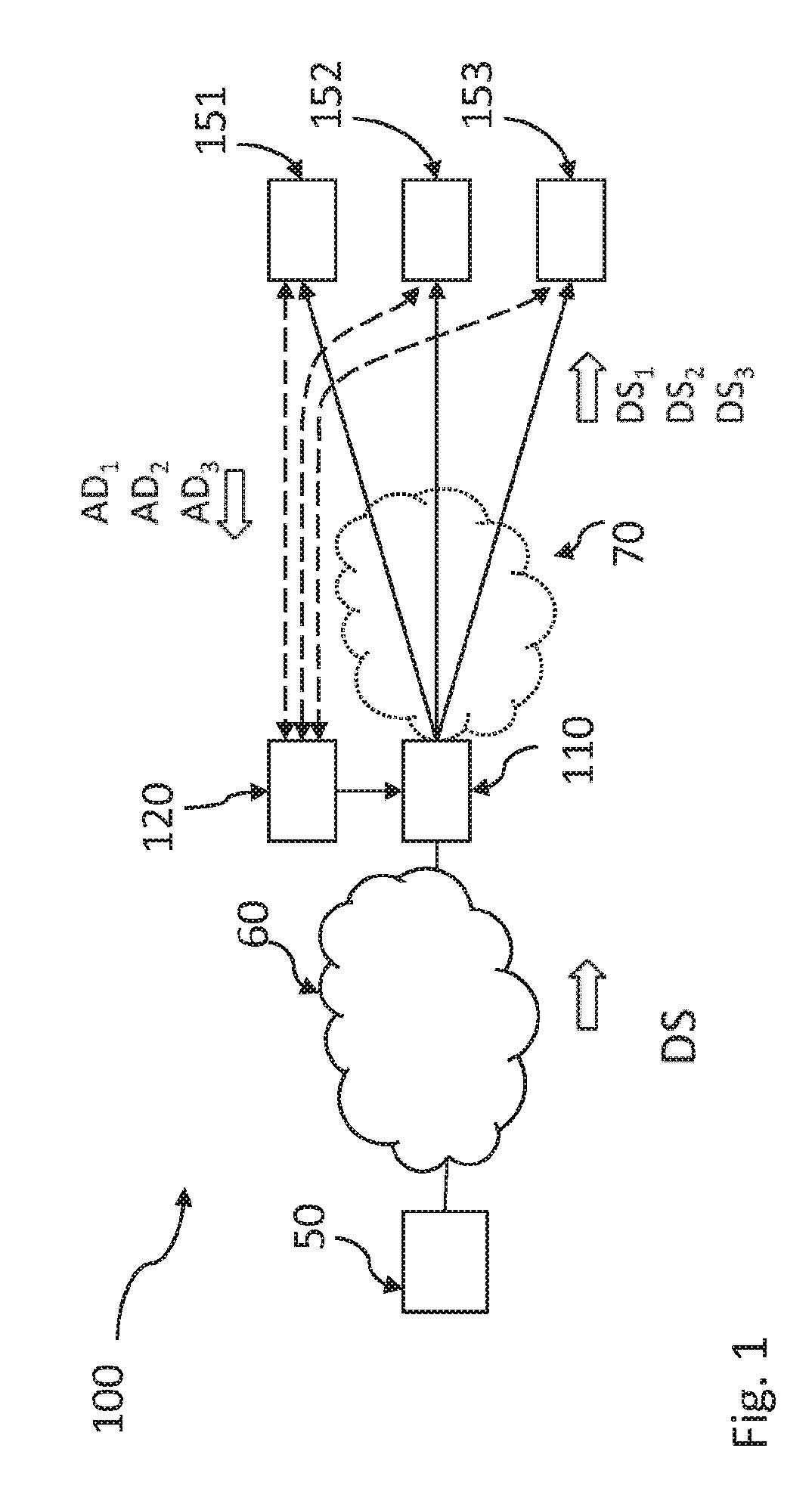Edge node control
a node control and edge technology, applied in the field of edge node fault management and bandwidth (bw), can solve the problems of network congestion, bad connectivity to base station or hotspot, and inability to ensure data arrival, so as to prevent network congestion and improve reliability
- Summary
- Abstract
- Description
- Claims
- Application Information
AI Technical Summary
Benefits of technology
Problems solved by technology
Method used
Image
Examples
Embodiment Construction
[0037]Referring now to FIG. 1, which is a block diagram schematically illustrating a distribution network system 100 of IP type for live distribution of e.g. video, in view of which aspects of the inventive concept will be described. An ingress device 50 of the distribution system 100, e.g. a server (a source), is arranged for providing media content to one or more recipients or client devices 151, 152, 153. The media content is sent as a data stream DS using unicast or multicast via respective communication links over a primary network 60, and is typically provided as a stream of contiguous packets, which may have different size, and may represent different types of packets with some header or trailer portion identifying the type.
[0038]In the distribution network system 100 data transmission of the data stream DS from the ingress device 50 to the client devices 151, 152, 153 may involve transmitting e.g. video content or other media content in the form of video packets (multi cast ...
PUM
 Login to View More
Login to View More Abstract
Description
Claims
Application Information
 Login to View More
Login to View More - R&D
- Intellectual Property
- Life Sciences
- Materials
- Tech Scout
- Unparalleled Data Quality
- Higher Quality Content
- 60% Fewer Hallucinations
Browse by: Latest US Patents, China's latest patents, Technical Efficacy Thesaurus, Application Domain, Technology Topic, Popular Technical Reports.
© 2025 PatSnap. All rights reserved.Legal|Privacy policy|Modern Slavery Act Transparency Statement|Sitemap|About US| Contact US: help@patsnap.com



